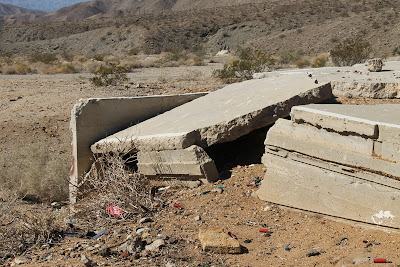These two hike are as far apart in the valley as you can get. Horse Thief Creek is to the west up on a mountain pass in the Santa Rosa range that leads to Los Angeles and the other trail is to the east at the entrance to the San Bernardino Mountains.
November is the last month to get some fall scenes as well as an opportunity to see some birds. As winter approaches some birds and greenery disappear.
Horse Thief Creek Trail is covered in chaparral (shrub land or heath) and slices through rugged
canyons. It is a 5 mile trip in and out with many hills and valleys to hike up and down.
 |
| Prickly-Pear Cactus among the rocks |
 |
| Rain water and traffic have beaten this trail up. |
 |
| The scrub oak has many of these orbs on their limbs. I believe they are acorns that have been bored into by insects and used as a nursery for their eggs. This one is about 1 1/2 inches across. |
 |
| It is interesting how this tree is both alive and dead at the same time. |
 |
| Horse Thief Creek Canyon |
 |
| Agave close-up |
 |
| California Fuchsia graced the side of the trail where there was some partial shade. |
 |
| Prickly-Pear Jungle? |
 |
| A Scrub Jay perches over our heads in a Mesquite tree. He is hoping for a handout. |
 |
| View of the marsh area from the upper trail shows just how dramatic the vegetation changes. |
 |
| A 4 + mile Canyon trail starts at the top end of this photo. |
 |
| Our hike took us around the hill and along the marsh area. |
 |
| View from back of the hill looking to the community of Morongo Valley |
 |
| Mesquite trees and shrubs slowly growing back in a burned out hillside. |
 |
| This area is covered with alkali goldenbush, a dominant perennial shrub that gradually replaced non-native weeds after a fire in 1992. |































